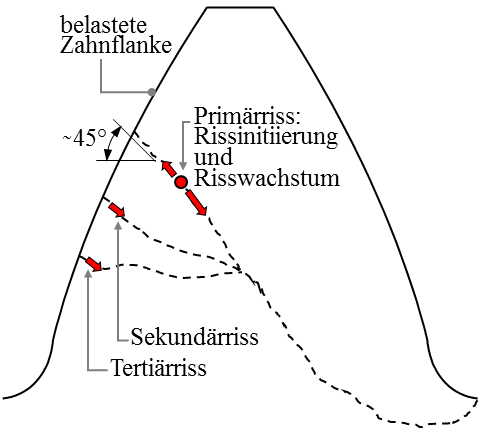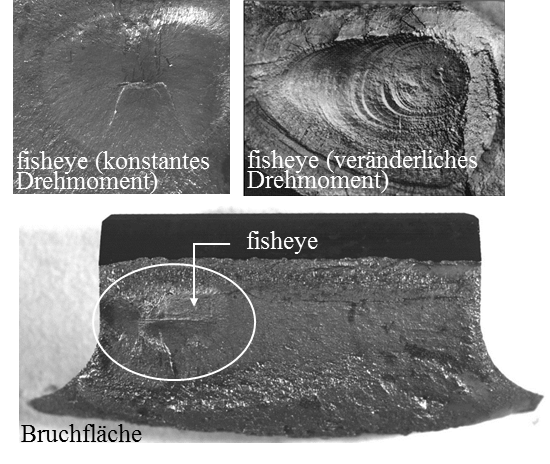Research Topic
| Short Title | Tooth Flank Fracture - Overloads |
| Start of Project | Q1/2023 |
| Funding | FVA-Nr. 992/I, IGF-Nr. 22866 BG Federal Ministry for Economic Affairs and Climate Action, BMWK |
| Contact | Dr.-Ing. T. Tobie |
Project Description
The aim of this project is to experimentally and theoretically investigate the material- and cleanliness-dependent influence of overloads on the tooth flank fracture load carrying capacity. Overloads can occur regularly during operation as well as during special events. However, as of today, there is no further information on which torque is decisive under variable operating conditions, although torque is the decisive input variable for flank fracture evaluation. In this research project, overloads that cause a reduction in the fatigue strength level with regard to tooth flank fracture are to be identified and permissible overloads defined. In addition, crack initiation at overloads and crack propagation below the fatigue level will be investigated.
Experimental investigations to date have focused on fatigue strength at constant load. However, the few random tests on the influence of overloads already show that there is a partial reduction in fatigue strength depending on the duration and level of the overload and the material.
Within the scope of the project, experimental investigations on crack growth and theoretical preliminary studies on the potentials of a fracture mechanics crack propagation model are to be carried out. From the experimental investigations, the overload factor to be used with regard to tooth flank fracture is to be estimated for the test variants and an extended calculation method for tooth flank fracture load carrying capacity with increased reliability and experimental validation is to be made available.
The results of the proposed research project will enable small and medium-sized companies to minimize the risk of future flank fractures through targeted gear design, material selection and heat treatment. By specifying an overload factor with regard to tooth flank fracture, gearings at risk of this damage can be designed in the design phase with increased information quality.

